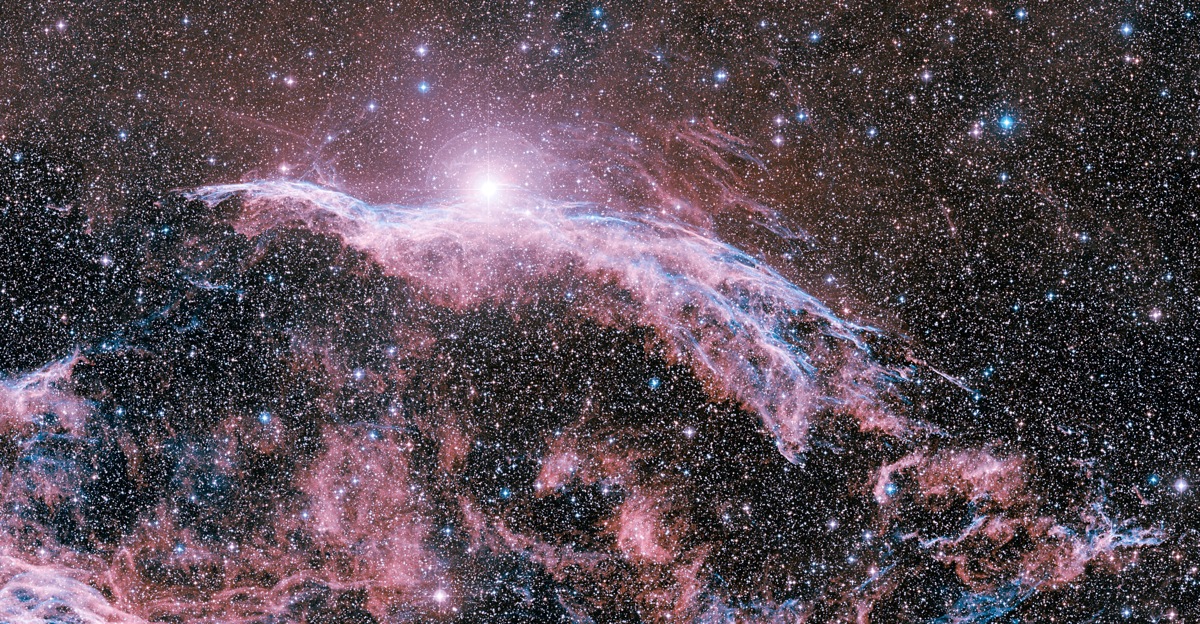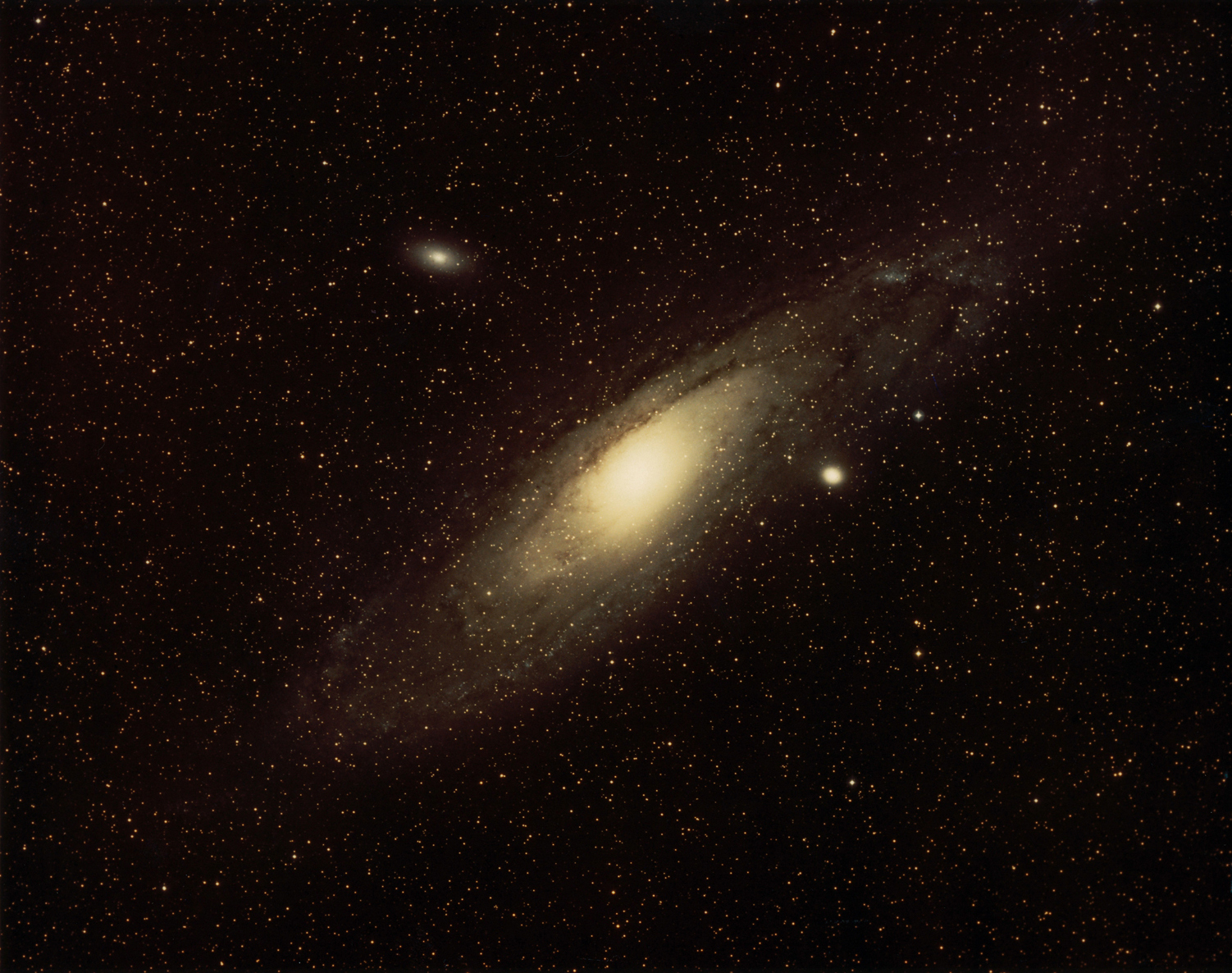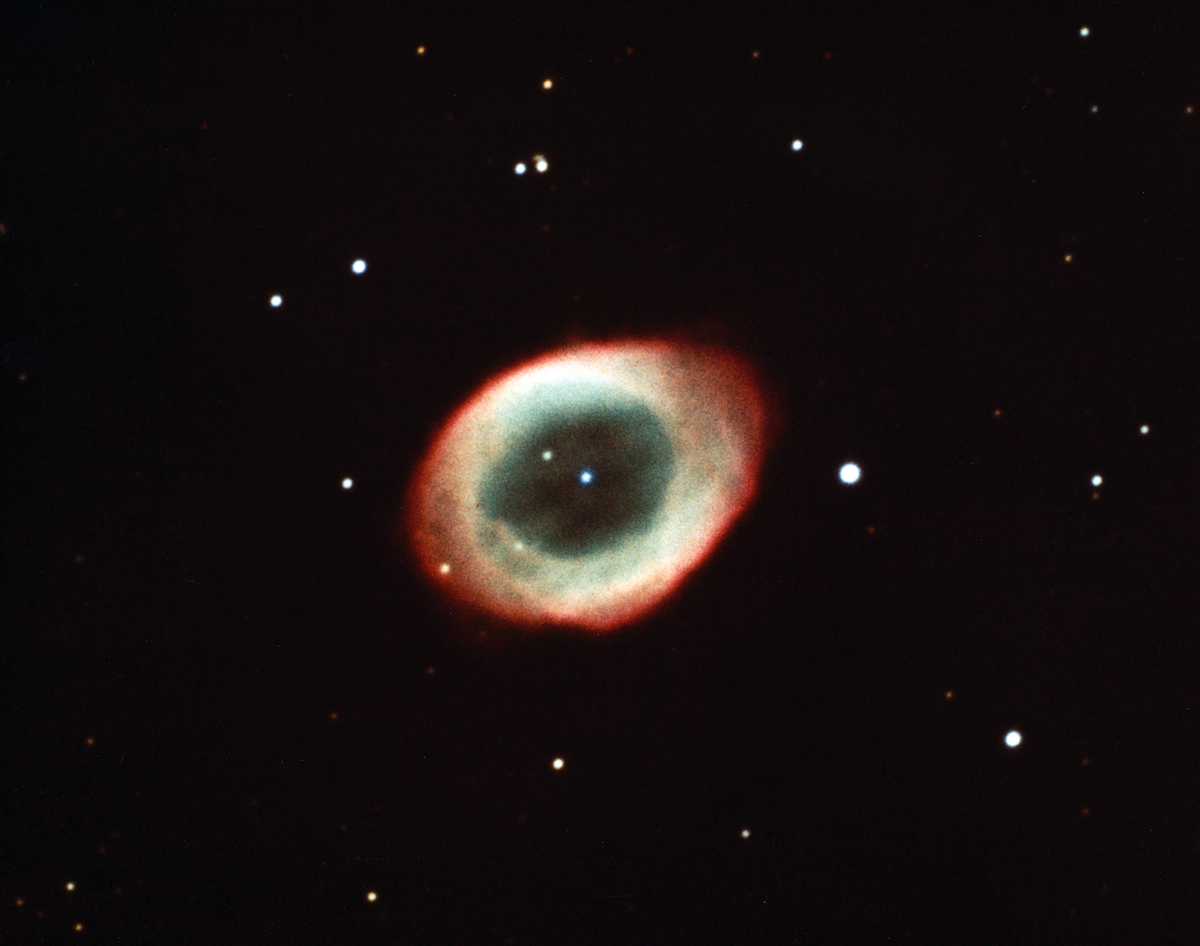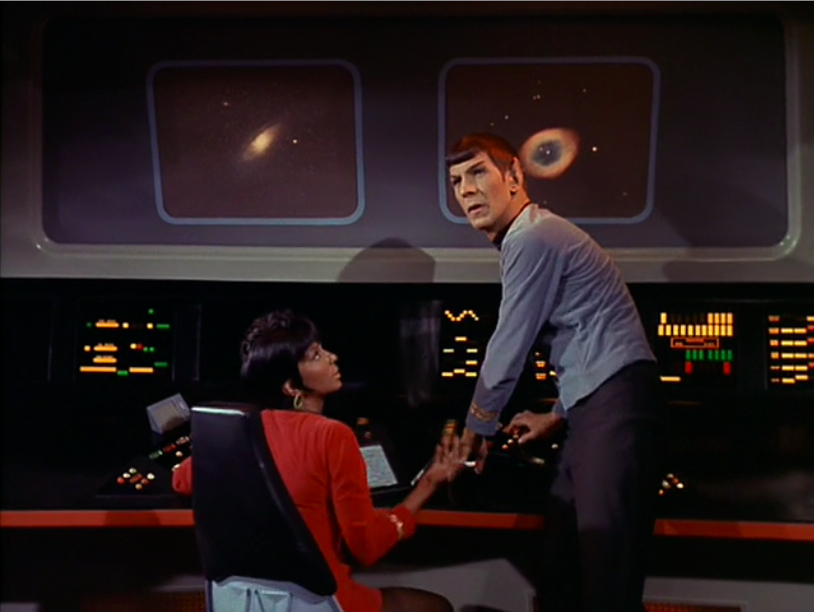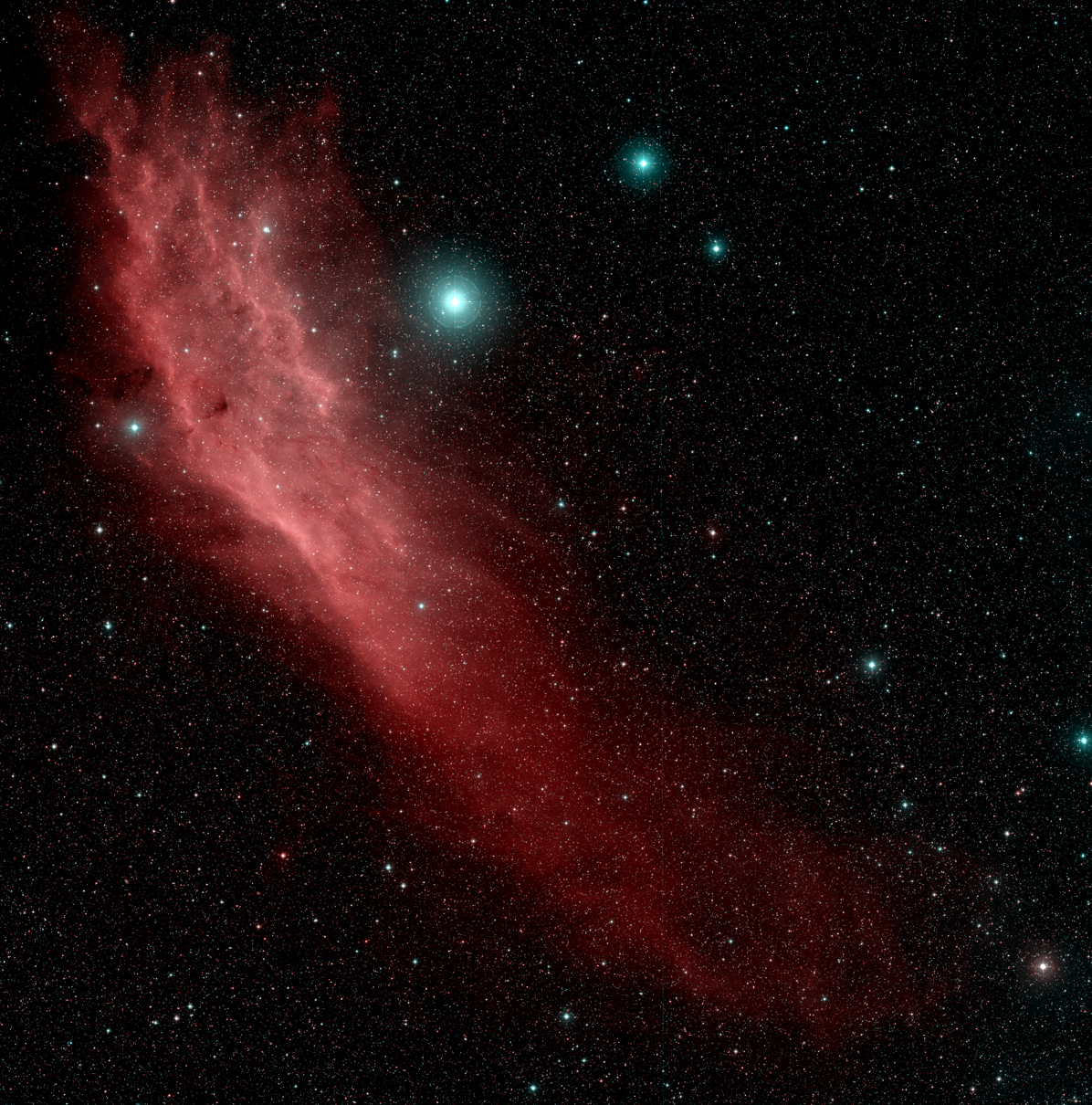
The California Nebula (also known as NGC 1499) is an emission nebula consisting largely of ionized hydrogen gas. It was named for its resemblance to the state of California - home to the Palomar Observatory. The nebula is located approximately 1,000 light years from our solar system in the direction of the constellation of Perseus.
The bright blue star Xi Persei (to the right of the nebula) most likely is the source of illumination for the nebula.
This image is a composite from two black and white images taken with the Palomar Observatory's 48-inch (1.2-meter) Samuel Oschin Telescope as a part of the Second Palomar Observatory Sky Survey (POSS II). The images were recorded on two glass photographic plates - one sensitive to red light and the other to blue. The plates were scanned and color combined to produce the image seen here.
